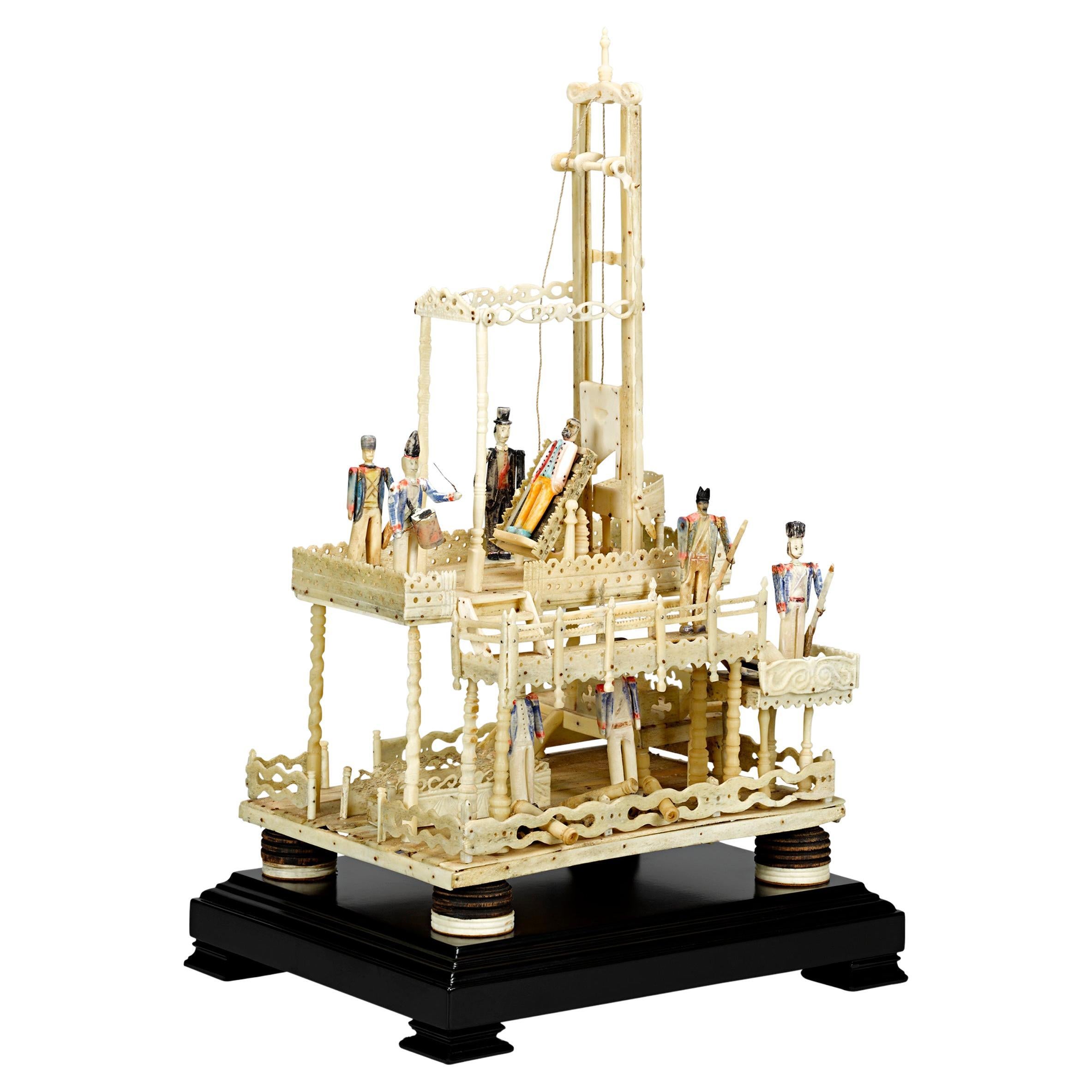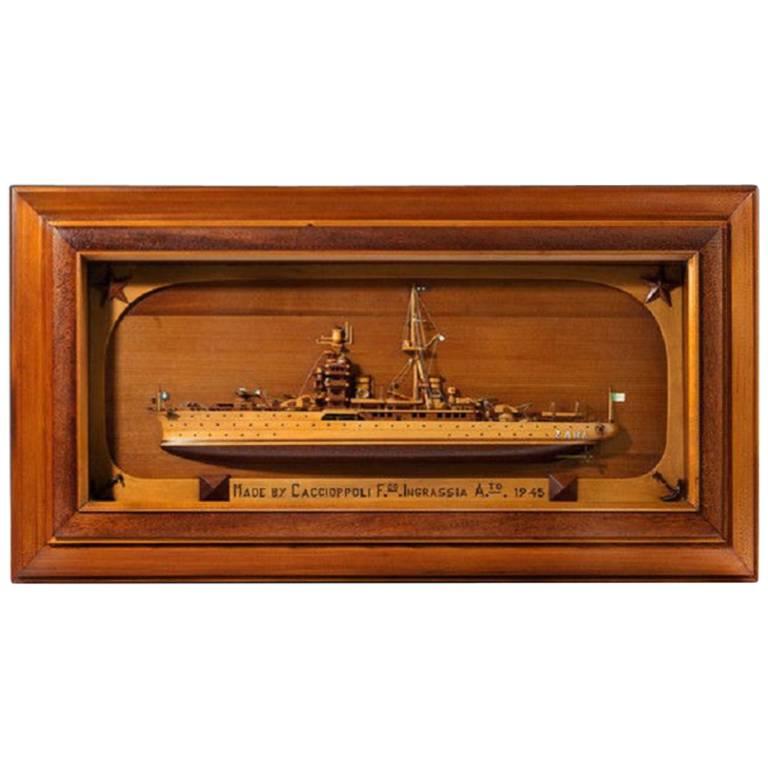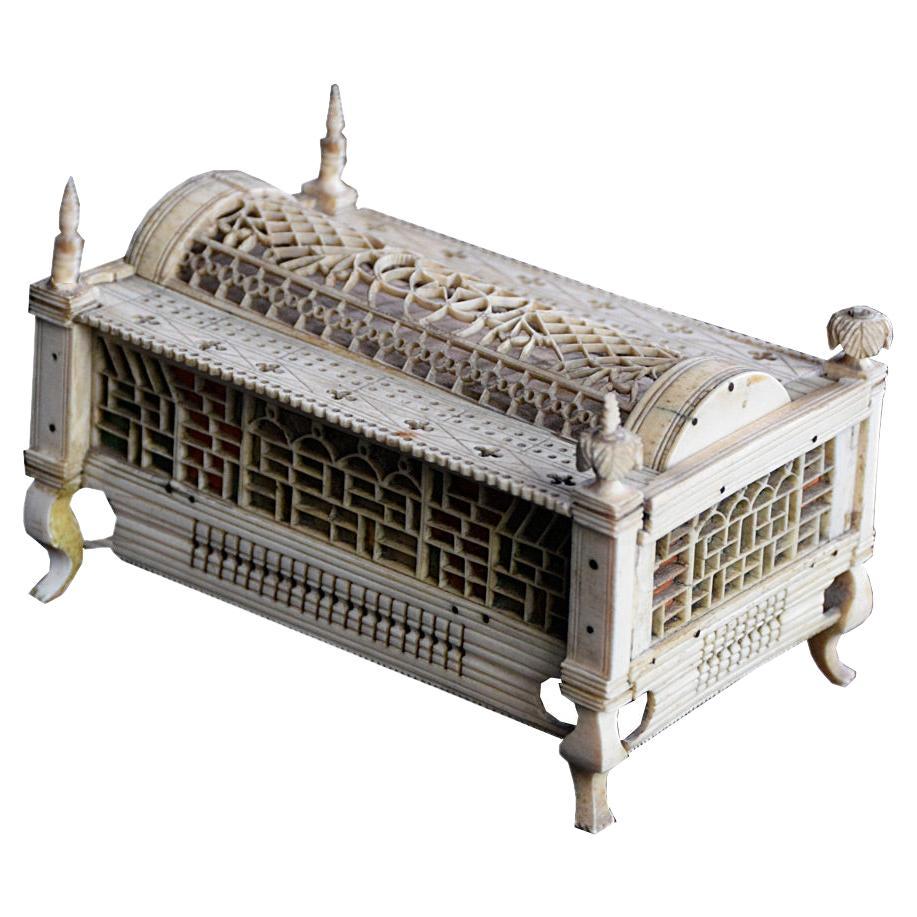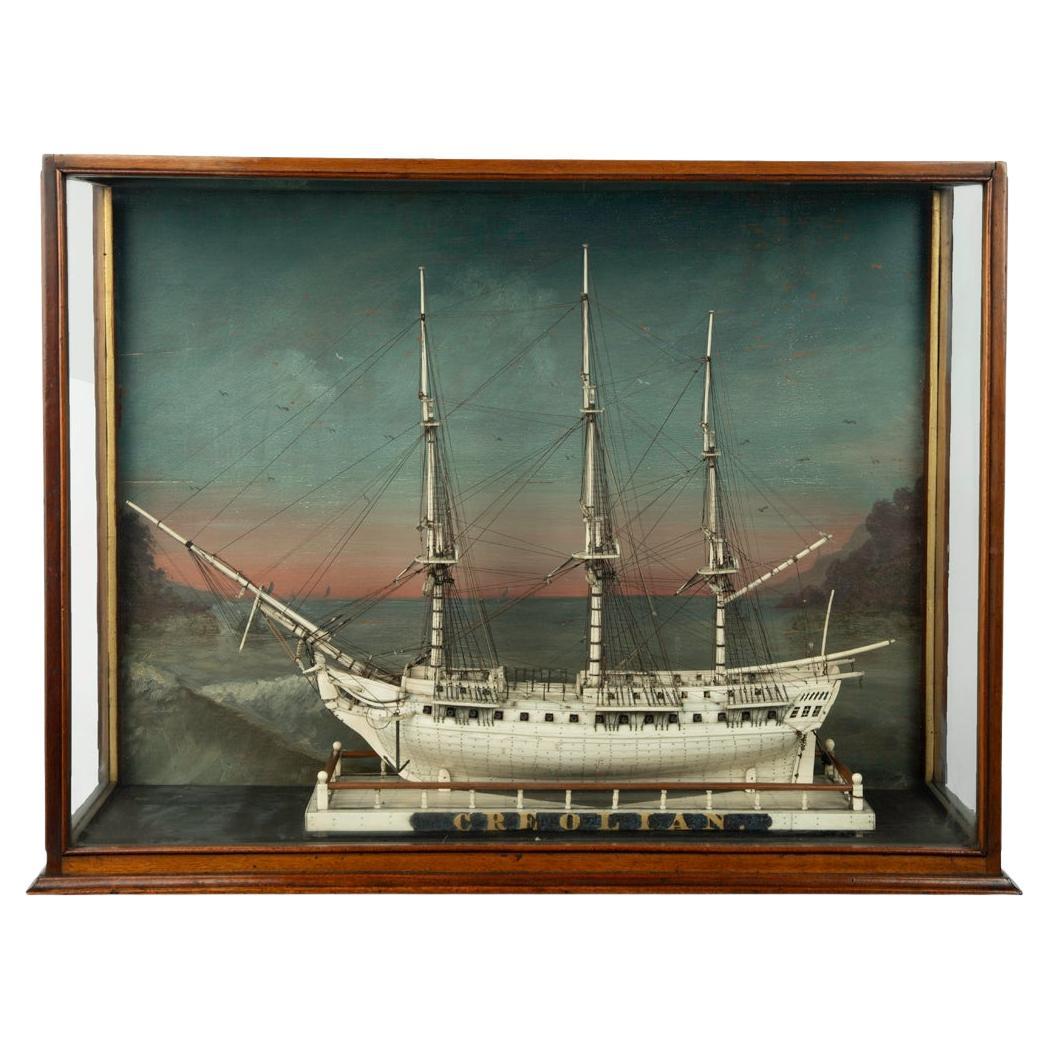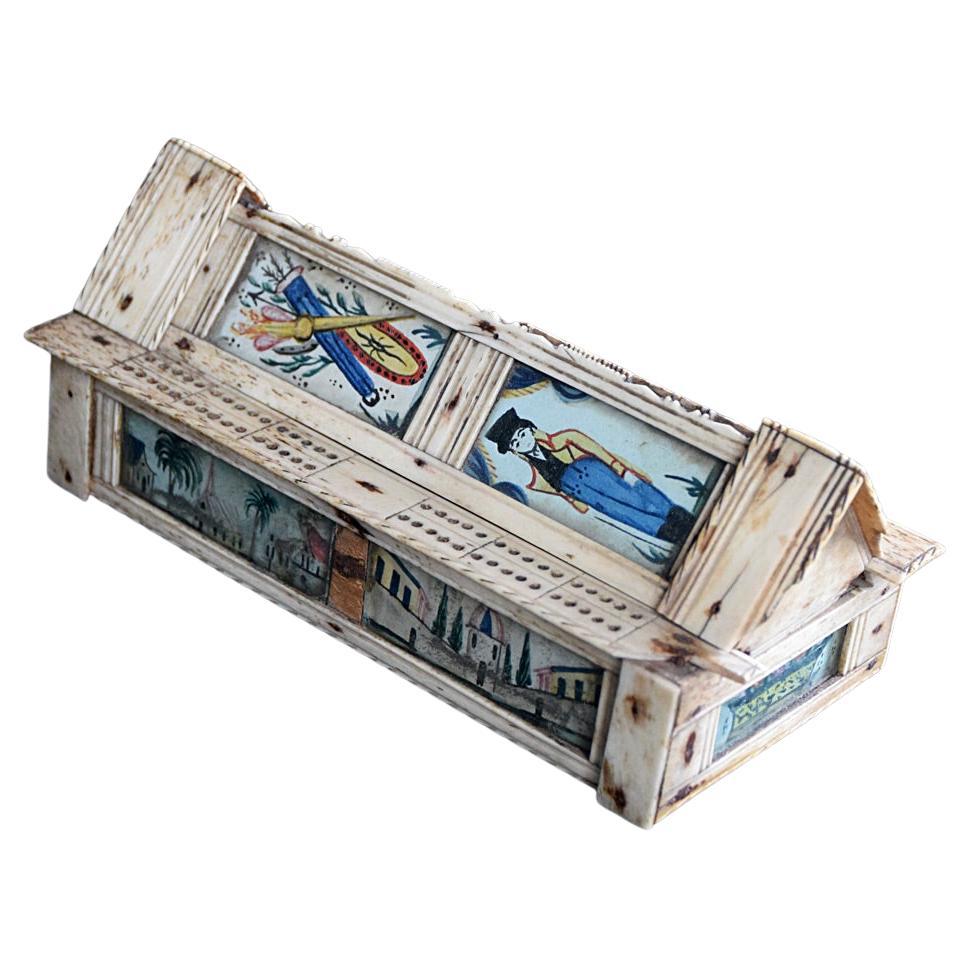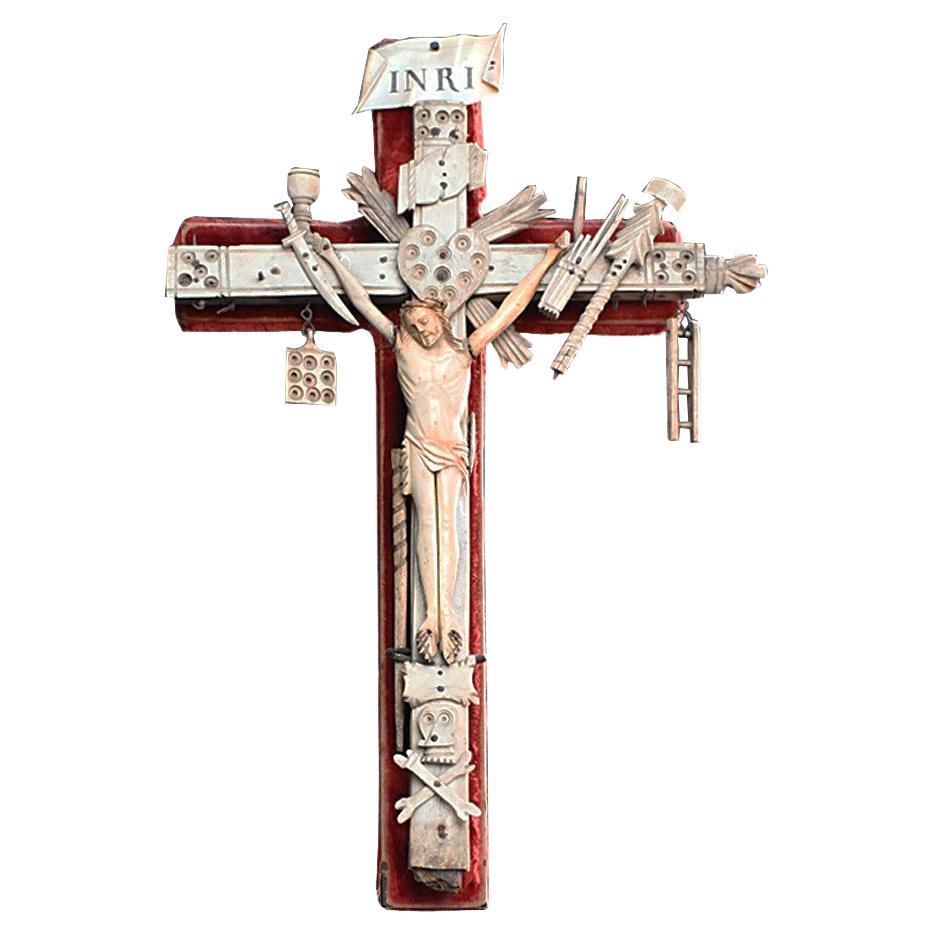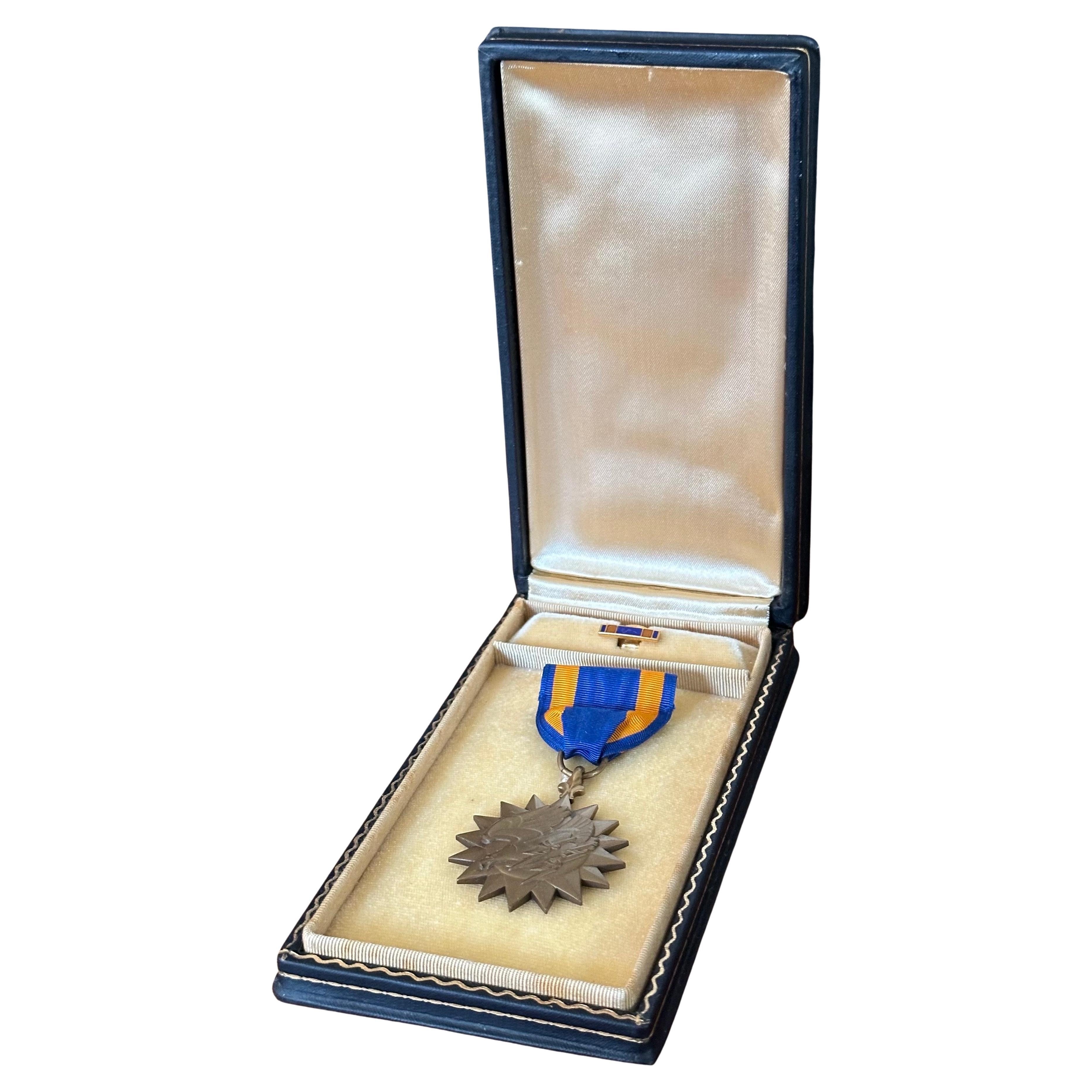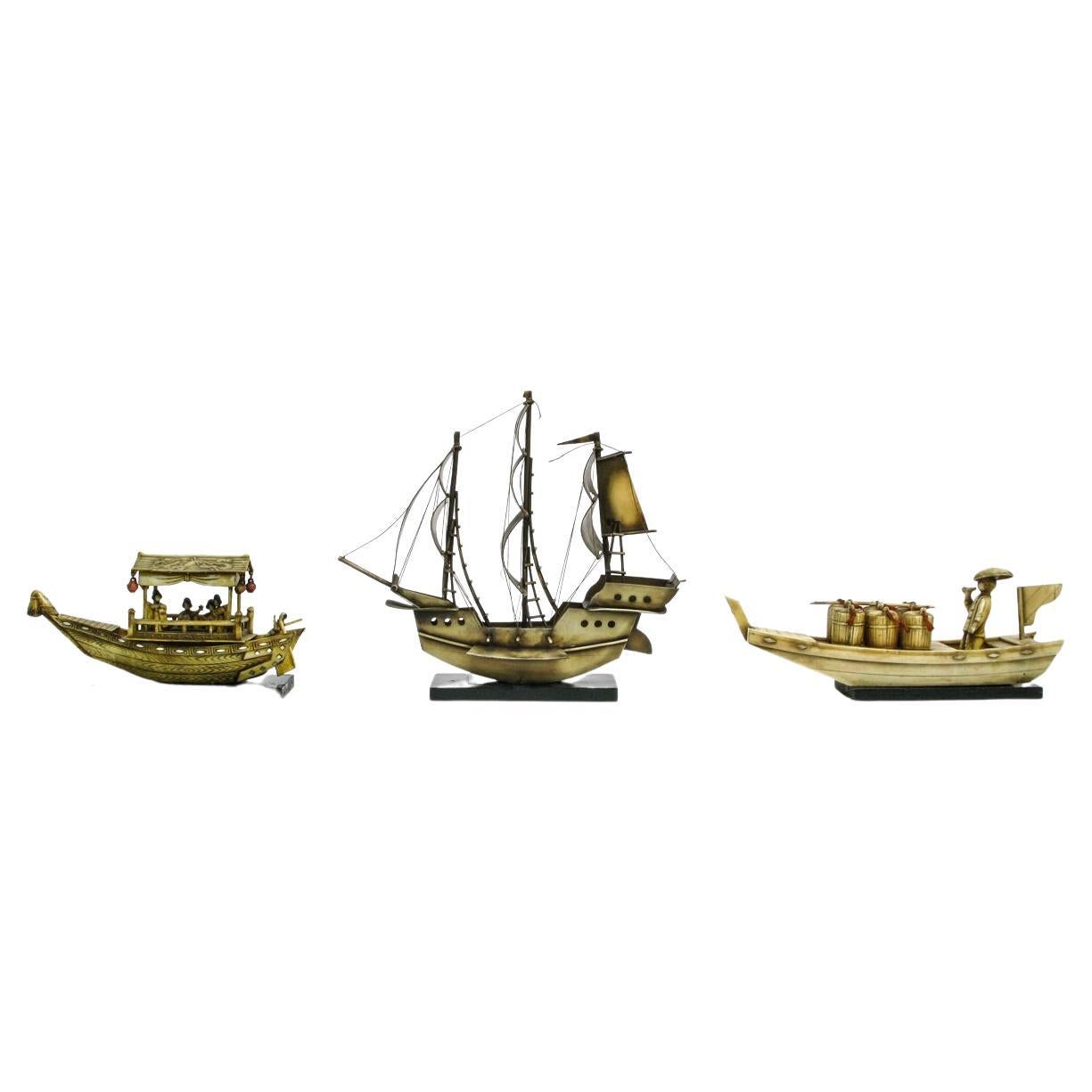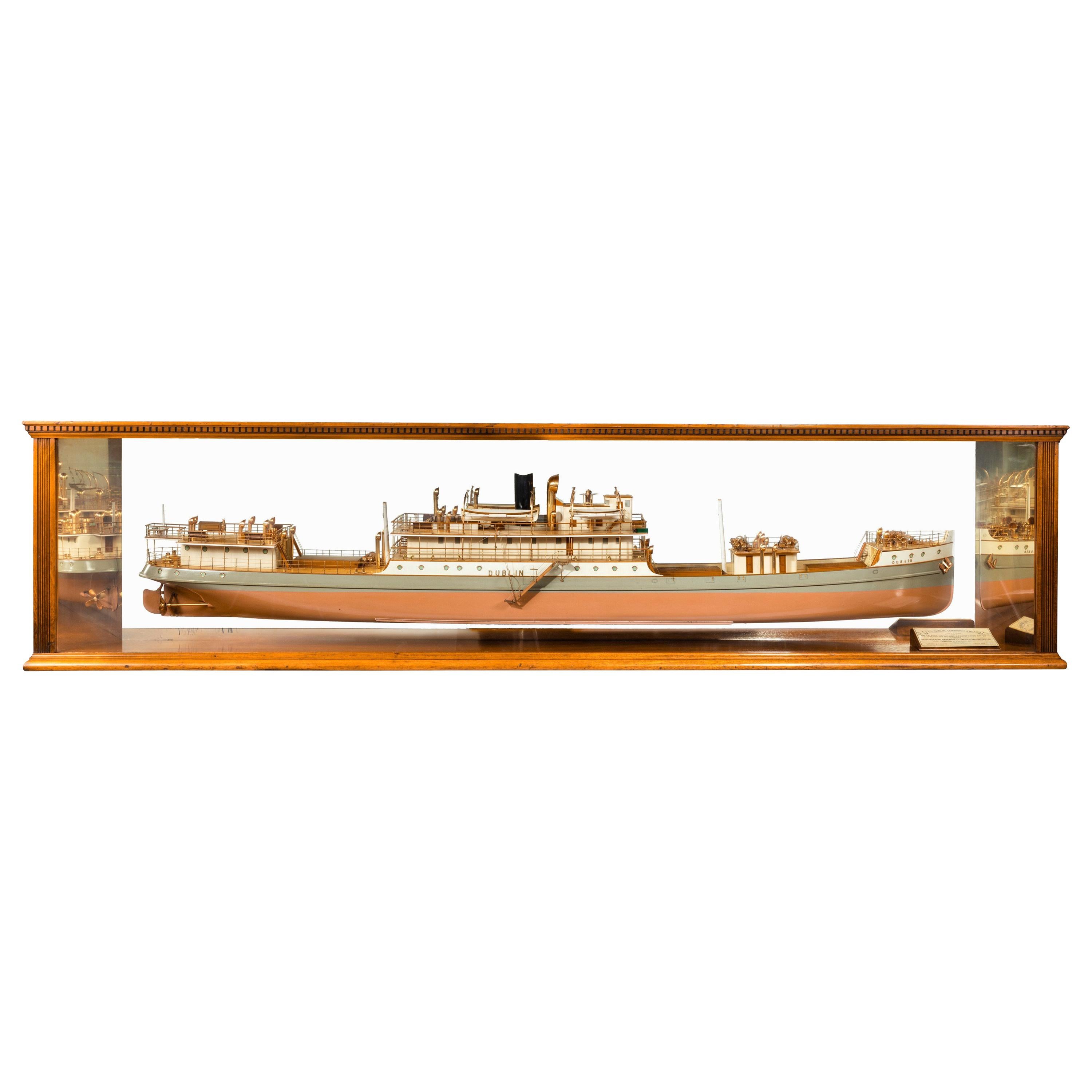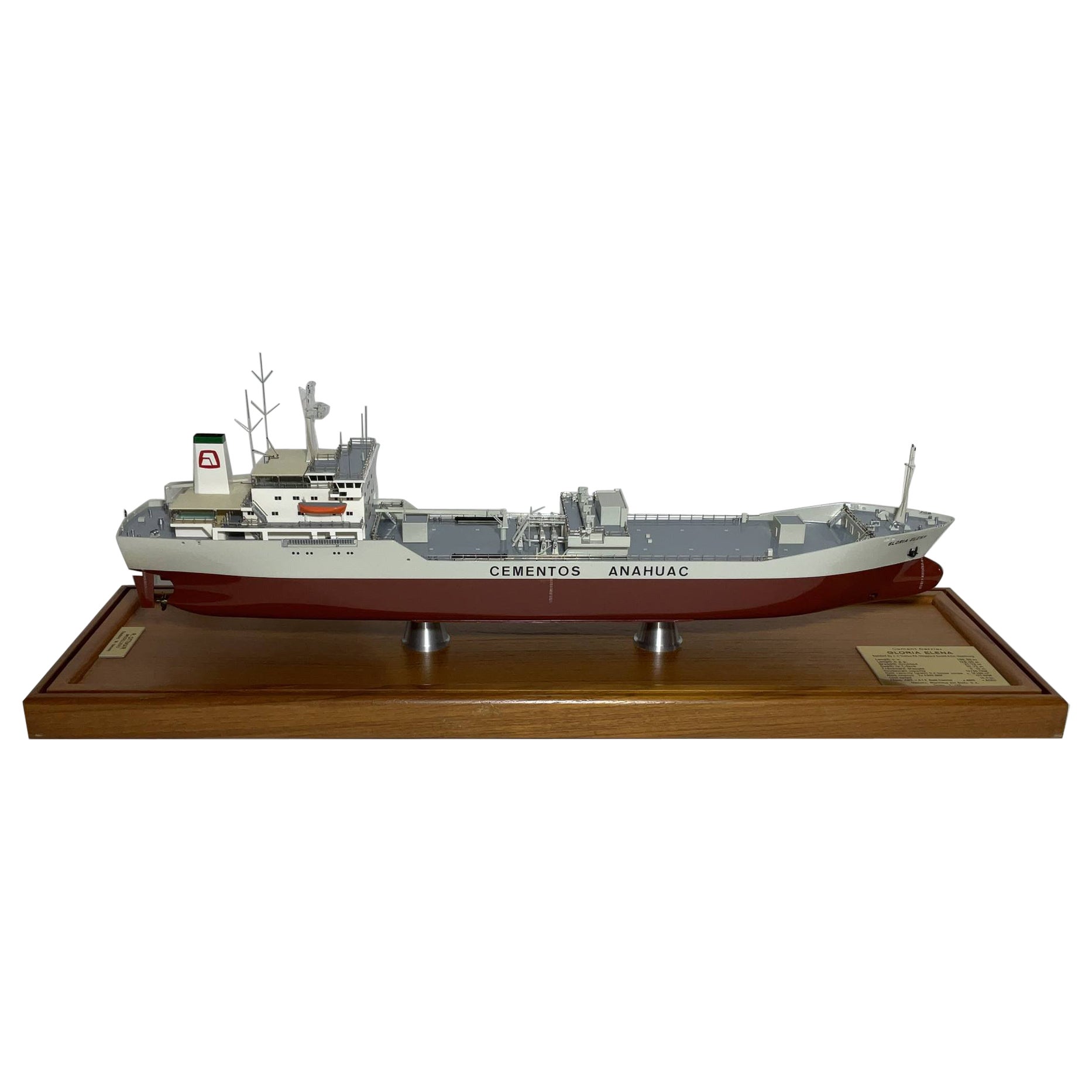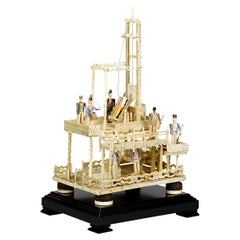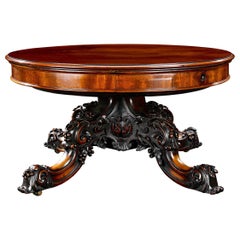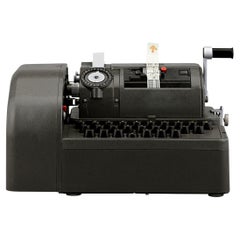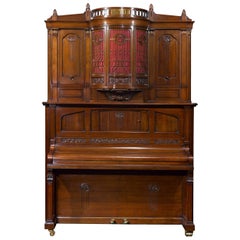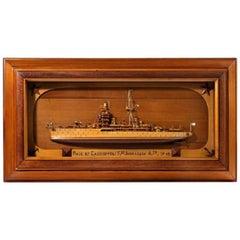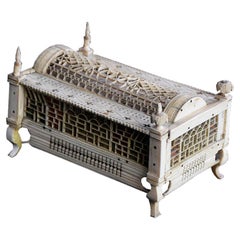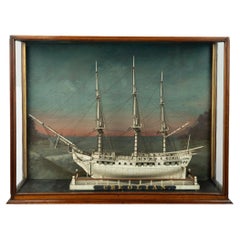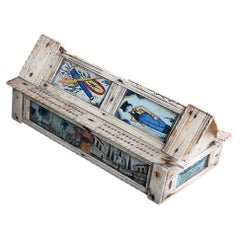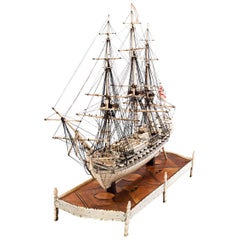
French Prisoner of War Ship Model, Le Héros
View Similar Items
Want more images or videos?
Request additional images or videos from the seller
1 of 7
French Prisoner of War Ship Model, Le Héros
Price:$70,000
$98,500List Price
About the Item
- Dimensions:Height: 25 in (63.5 cm)Width: 41 in (104.14 cm)Depth: 15 in (38.1 cm)
- Style:Other (In the Style Of)
- Materials and Techniques:
- Place of Origin:
- Period:
- Date of Manufacture:circa 1808
- Condition:
- Seller Location:New Orleans, LA
- Reference Number:Seller: 30-60831stDibs: LU891113841231
About the Seller
5.0
Recognized Seller
These prestigious sellers are industry leaders and represent the highest echelon for item quality and design.
Established in 1912
1stDibs seller since 2010
110 sales on 1stDibs
Typical response time: 4 hours
Authenticity Guarantee
In the unlikely event there’s an issue with an item’s authenticity, contact us within 1 year for a full refund. DetailsMoney-Back Guarantee
If your item is not as described, is damaged in transit, or does not arrive, contact us within 7 days for a full refund. Details24-Hour Cancellation
You have a 24-hour grace period in which to reconsider your purchase, with no questions asked.Vetted Professional Sellers
Our world-class sellers must adhere to strict standards for service and quality, maintaining the integrity of our listings.Price-Match Guarantee
If you find that a seller listed the same item for a lower price elsewhere, we’ll match it.Trusted Global Delivery
Our best-in-class carrier network provides specialized shipping options worldwide, including custom delivery.More From This Seller
View AllNapoleonic Prisoner-of-War Guillotine
Located in New Orleans, LA
An incredible and extremely rare artifact of world history, this mutton bone model of a guillotine was created during the Napoleonic wars by a French prisoner of war. Many of the inmates at the prisoner of war camps were skilled artisans long before they were soldiers, and because of the long duration of the conflict and cost of care, their captors encouraged detainees to use their skills to create objects to be sold at civilian open markets. Because of the intricacy of these fascinating objets d'art, very few of these models have survived the test of time. This masterpiece is impeccably detailed with soldiers and cannons lining the platforms. Adding to the rarity of this piece is that it has moving parts, as only a scant few model carvings were ever created with such mechanical accuracy. The soldiers have movable arms, while the guillotine features a movable "blade" for added authenticity.
By many accounts, Napoleonic prisoners of war...
Category
Antique 19th Century French Models and Miniatures
Materials
Bone
19th Century Exhibition Model of Expanding Table by Samuel Hawkins
By Samuel Hawkins
Located in New Orleans, LA
A masterpiece of both cabinetmaking and mechanical engineering, this one-of-a-kind expanding table was crafted by the renowned cabinetmaker Samuel Hawkins of London for the Great Exhibition of 1851. Diminutive in size, the fascinating table was designed as a model to demonstrate Hawkins’ innovative patent screw movement to visitors of the Exhibition – six million people in total over five months. It was exhibited again a century later at the Victoria & Albert Museum during the Festival of Britain, an event intended “to symbolise two main qualities of the national character: realism and strength on the one hand, and, on the other, independence and imagination” (Catalogue of the Exhibition, 1951, p.117). To this day, the miniature masterpiece demonstrates the quest of English furniture makers to combine technical innovation with superb craftsmanship.
Displaying exceptional ingenuity, Hawkins’ wind-out screw mechanism allowed one to extend the table’s base to accommodate concentric leaves with the simple crank of a handle. It is based on the inventive expanding table originally designed by Robert Jupe in 1835, which used a swivel mechanism to separate sections of the tabletop and allow for segmented leaves to be inserted. Hawkins’ tabletop, on the other hand, extends outwards directly from the center in order to accommodate additional leaves around its diameter. This unique design allowed the mechanism to also smoothly operate on rectangular tables, which could be wound out from the middle to allow for more table space.
Hawkins was not alone in his endeavor to combine the technical merits of engineering and mechanics with the most artful pursuit of cabinetmaking. The first half of the 19th century saw a prolific increase in the popularity of applying new ideas to traditional furniture principles, which allowed furniture to serve many purposes. The resulting “patent” furniture was practical and refined, though few were as innovative as Hawkins’ prodigious design.
Carved with the year of the Exhibition on the beautifully designed pedestal base, the table is a testament to the significance of this innovation. The model is mentioned in detail in the catalog of the Great Exhibition of 1851, the first international exhibition of industry, manufacturing, and science. Held at London’s dazzling Crystal Palace, its visitors were treated to exhibits from around the globe, including feats of engineering, innovations in industry, and marvels of design. Queen Victoria herself was a frequent visitor, along with her husband, Prince Albert, and others including Charlotte...
Category
Antique 19th Century English Other Tables
Materials
Mahogany
Cx-52 Model Swiss Cipher Machine
Located in New Orleans, LA
A triumph of ingenuity and craftsmanship, this Swiss cipher machine is a fabulous example of mechanical precision. Cipher machines are used to encrypt a...
Category
20th Century Swiss Other Historical Memorabilia
Materials
Metal
Hupfeld Phonoliszt-Violina Model B Music Cabinet
Located in New Orleans, LA
This incredible Hupfeld Phonoliszt-Violina Model B music cabinet is among the rarest and most advanced automatic music players of its time. The remarkable machine, crafted by renowned Leipzig firm of Ludwig Hupfeld, is one of the most mechanically complex music players ever made, boasting three self-playing violins accompanied by a self-playing piano. Once made in the 1000s to entertain patrons of upscale hotels, restaurants, and cafes, these extraordinary machines...
Category
20th Century German Other Musical Instruments
Materials
Wood
Carl Zeiss Cold War Binocular Periscope
By Carl Zeiss
Located in New Orleans, LA
Binocular Periscope
Carl Zeiss
Circa 1965
This exceptional binocular periscope, crafted by the renowned Carl Zeiss optical works, represents the pinnacle of mid-20th century German ...
Category
20th Century German Historical Memorabilia
Materials
Metal
French Nécessaire de Voyage
Located in New Orleans, LA
This exceptional and rare French nécessaire de voyage is almost certainly the work of the highly respected Parisian manufacturer Pierre-Dominique ...
Category
Antique Early 19th Century French Empire Historical Memorabilia
Materials
Crystal, Silver
$78,500
You May Also Like
Rare WWII Italian Prisoner of War Work Model of Italian Cruiser 'Zara'
Located in Lymington, Hampshire
Rare WWII Italian Prisoner of war work model of Italian heavy cruiser 'Zara' with finely detailed superstructure and armament in a cedar and pine glazed c...
Category
Vintage 1940s English Models and Miniatures
Materials
Wood
Napoleonic Prisoner of War Casket Dominoes Set
Located in London, GB
Napoleonic Prisoner of war casket Dominoes set
We share what we love, and we love this early 19th century Napoleonic prisoner of war cask...
Category
Antique 1820s French Folk Art Toys
Materials
Bone
A Napoleonic era bone prisoner of war model of the 40-gun frigate ‘Creolian’
Located in Lymington, Hampshire
A Napoleonic era bone prisoner of war model of the 40-gun frigate ‘Creolian’, the three masted barque with a planked hull, finely detailed with a carved poop deck and a female figurehead, intricate black thread rigging and a black plaque stating in gilt, Creolian. In the original glazed wooden case with a painted background of a sunset over a bay with ships on the horizon. French, circa 1800.
Provenance Ivan Roll Amis, d. 1 July 1970
Richard Henry Allen Amis, CBE, thence by descent
During the Revolutionary and Napoleonic Wars (1793-1815), large numbers of French soldiers and marines were taken prisoner. To help pass the time and generate a small income, they would make a variety of objects—including ship models—from simple, easily-sourced materials such as bone and wood for sale at local markets. Typically, the models were not made to scale and tools were limited, making the quality and attention to detail in this work even more remarkable. To realise a good price at market, the models were often named after famous ships of the time. It may well be that this ship was the ‘Créole’, a 40-gun frigate of the French Navy. She served in the Brest squadron, took part in Ganteaume’s expeditions of 1801 to Egypt, and was involved in the French acquisition of Santo Domingo (also known as the Era de Francia) and briefly detained Toussaint Louverture...
Category
Antique 19th Century French Nautical Objects
Materials
Bone, Wood
Napoleonic Prisoner of War Painted Casket Dominoes Set
Located in London, GB
Napoleonic Prisoner of war painted casket dominoes set
We share what we love, and we love this early 19th century Napoleonic prisoner of war hand painted ...
Category
Antique 19th Century French Folk Art Game Boards
Materials
Bone
Turkish WWI Prisoner of War Glass Beadwork Amulet Necklace
Located in Bishop's Stortford, Hertfordshire
An exceptionally good quality Turkish prisoner of war glass beadwork amulet necklace dating from the first world war 1914-1919. These pieces were made by Turkish prisoners of war, ca...
Category
Vintage 1910s Turkish Folk Art Collectible Jewelry
Materials
Glass
19th Century Napoleonic Prisoner of War Folk Art Corpus
Located in London, GB
19th century Napoleonic Prisoner of War Folk art Corpus
A rare and unusual example of a 19th Century hand crafted Napoleonic folk art prisoner of war corpus Christi. Later added ...
Category
Antique 19th Century Unknown Folk Art Religious Items
Materials
Bone
Recently Viewed
View AllMore Ways To Browse
Old Britain Castles
Naval Model Model
Napoleonic Soldier
The Battle Of Trafalgar
Prisoner Of War Ship
Carved Bone Miniature
Napoleonic Bone
Napoleonic Prisoner Of War
Bone Ship Models
Miniature Gun
Prisoner Of War Ship Model
Miniature Antique Collectibles
Antique Curiosity Cabinet
Antique Victorian Miniature
Antique Ship Models
Antique Miniature Houses
Boat Bar
Bar Car
